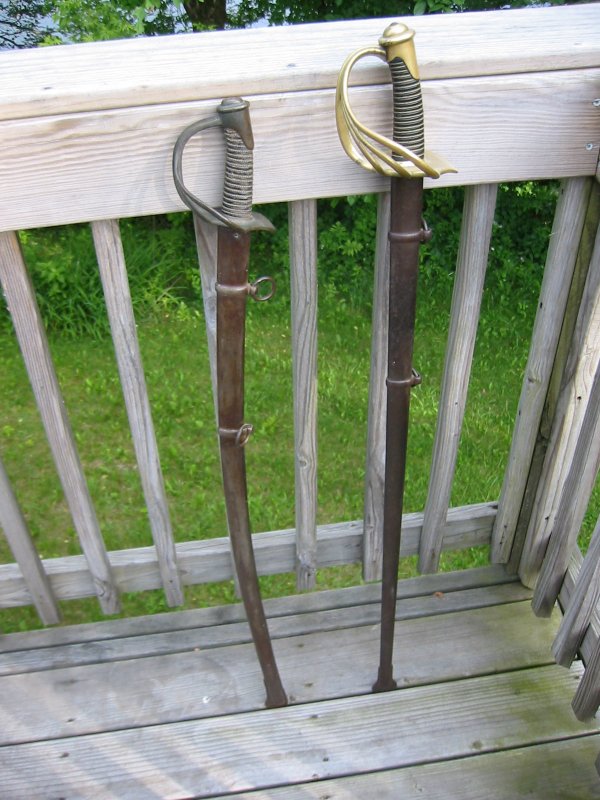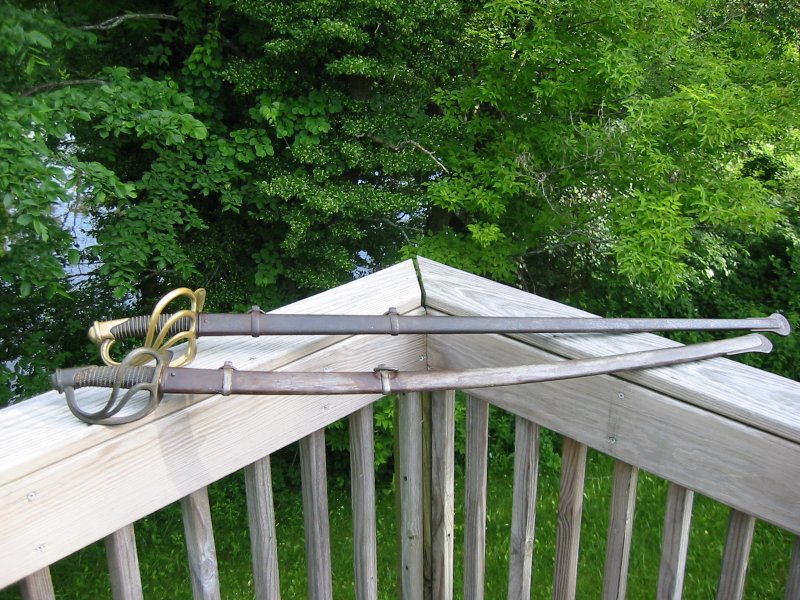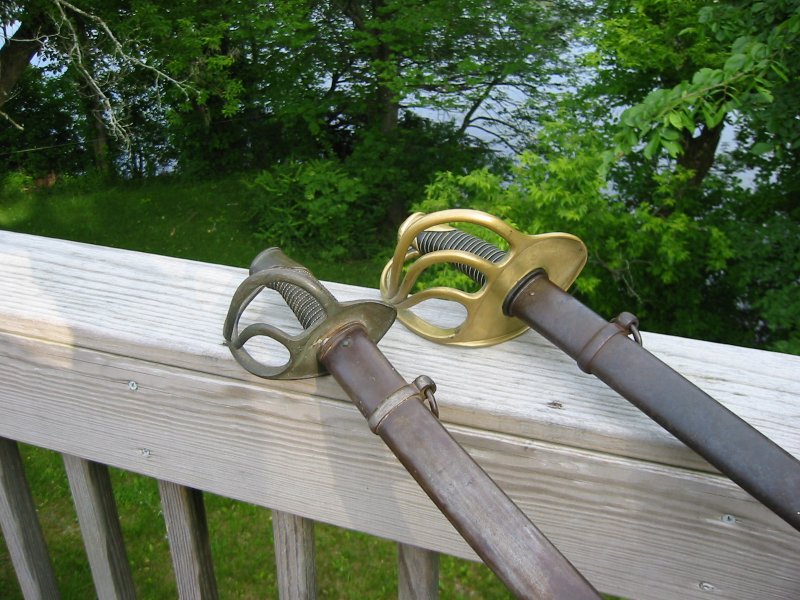Posts: 1,978 Location: Nipmuc USA
Sat 29 Aug, 2009 6:22 pm
The French cavalry fielded both curved and straight swords, with the cuirrassiers, carabiniers and dragons fielding these long straight swords. You might note that the first image attached is a shortened blade (while still quite large/long was shortened to later regulation. These cut down and refit blades continue with the 1854 hilts and right through the 19th century. The reign of the
hussars and lancers would see them using their curved sabres.
My 1854 dragon is quite a handful, even compared to the light cavalry swords. I am attaching a comparasion shot of a generic German made light cavalry sword similar in shape and size to their mle1822 (although this would be called a heavy, or wristbreaker in American context). I'll also attach an image of some spadroons (infantry swords) with comparison of my 1854 and a reproduction Patton sword. The 1854 actually dwarfs the Patton in feel and overall size. Period Pattons feel lightweight in comparison and feels at least a half pound lighter than the Windlass offering.
My 1854 shows having been sharpened from the get go and while not table carving sharp would certainly open a wound from a blow to flesh. I doubt though it would be effective in slashing or hacking at even moderately thick uniform coats and tunics. The light sabres were the choice for that melee use and purpose.
While they might be best considered having been fielded as lance substitutes, lancers themselves were still a category of use right up to the 20th century. Jean Binck's old threads at SFI would break down lengths of the straight swords. My example is an inch or so short of the longer carabinier models but very much the same in appearance. My dragon is about the overall length of a good many earlier longswords and greatswords in the 48" range.
I frequent the dealer site Le Hussard, in lieu of some book learning I should be doing but it does offer an easy comparison chart of sorts.
Cheers
GC
 Attachment: 106.47 KB
Attachment: 106.47 KB

1854 Dragon 1840 American sabre
 Attachment: 150.39 KB
Attachment: 150.39 KB

 Attachment: 119.37 KB
Attachment: 119.37 KB





